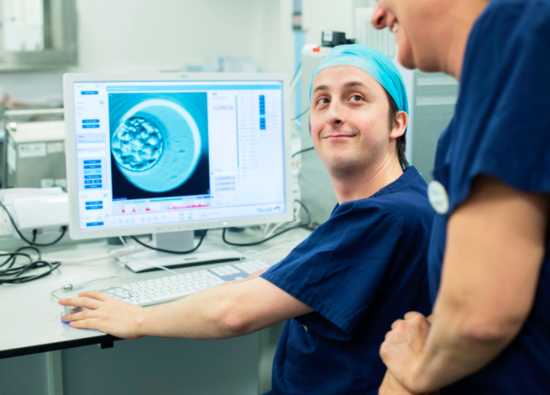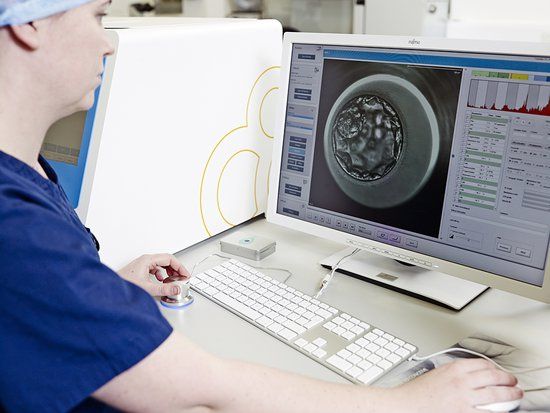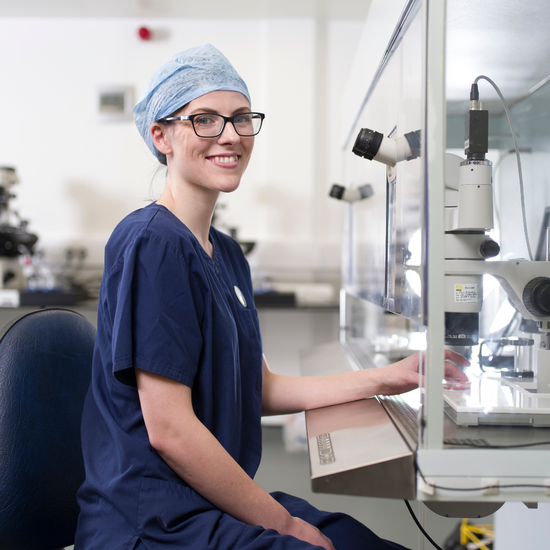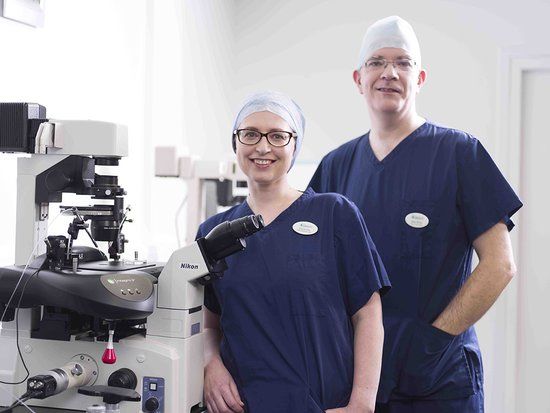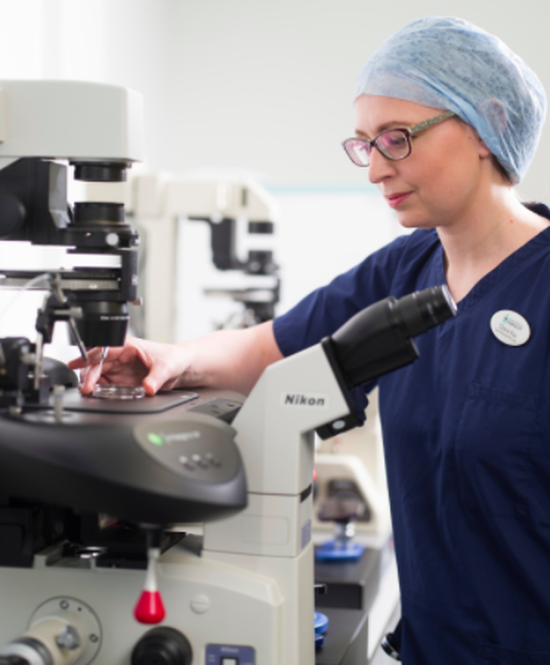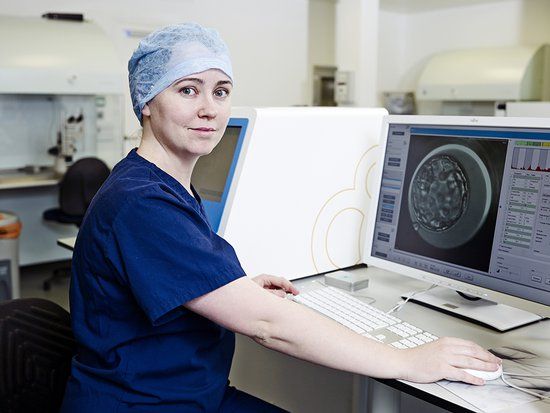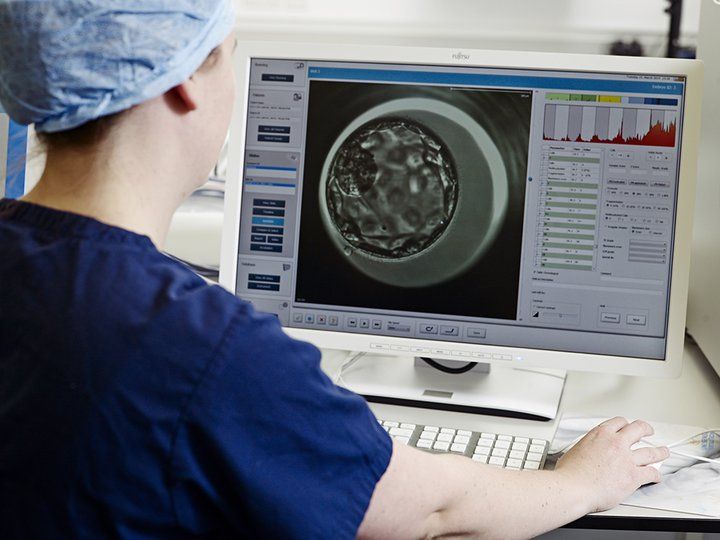
Embryo development is the most crucial part of IVF, ICSI, and IVF treatment using donor eggs.
But what actually happens in our laboratory? How do we monitor the development of your embryos, and how do we choose which embryos are best to transfer?
About our laboratory
Our laboratory is where life begins, where all the stages of fertility treatment take place. For this to happen, your embryos need the perfect environment, and our laboratory is one of the most advanced of its kind.
Designed and developed to the exact requirements specified by our expert embryologists and andrologists, it monitors everything from the air quality to the temperature of the room to ensure safe development and care of your eggs, embryos and sperm at all times.
Once collected, your eggs are taken straight into our laboratory where they are transferred to the care of our embryologists. Through our state-of-the-art Electronic Witnessing system – a track and trace system for eggs, embryos and sperm – your eggs can only be used by you.
Fertilising your eggs
Your eggs are fertilised by either IVF or ICSI methods, dependent upon your treatment plan, using either your partner’s sperm, or donor sperm. Sperm is carefully washed and pre-prepared by our expert team, ready to fertilise your eggs. For IVF, the sperm is mixed with your egg in a single dish. For ICSI, a single healthy sperm is injected directly into each egg to fertilise it. Your eggs are then carefully stored and monitored through state-of-the-art microscopes for signs of fertilisation over the coming hours.
Monitoring embryo development
Any eggs that have started the fertilisation process are now embryos. At this stage, they are transferred to either our EmbryoScope time-lapse incubators, or our standard incubators, on which the time-lapse system is based. Time-lapse EmbryoScope gives our team highly-detailed information of every stage of development, so that only embryos with the highest potential for pregnancy are selected for transfer.
Understanding the stages of embryo development
Your embryos are graded as they develop by our embryologists, by observation under state-of-the-art microscopes or by using Embryoscope, which allows undisturbed development. The embryo begins as a single cell that then divides into two, then into four, and then into eight, all by day three of development. This is referred to as the ‘cleavage stage’ and embryos are graded on day three based on the evenness of their cells, and the degree of cell breakdown or ‘fragmentation’. By day five, the embryo expands into a blastocyst and on this day we grade the degree of expansion and the cell lineages of what will become the placenta and foetus.
How we choose which embryos to transfer
Selection for transfer or freezing is based on your embryo’s grade at day five. On day five, the embryo with the highest grade will be selected for transfer, with any others reaching a minimum development threshold chosen for freezing. EmbryoScope assists with embryo selection as its built-in camera takes constant photographs – several an hour, 24/7 - of each embryo as it grows, resulting in a time-lapse video of development showing these crucial early stages.
Increasing your chances of pregnancy
Choosing quality embryos for transfer is the vital factor for pregnancy. But to help increase your chances further, we use EmbryoGlue, offered free for all patients where treatment involves embryo transfer. Just before transfer your embryos are dipped into the special solution that acts like glue, helping the embryo to stick to your uterus and implant successfully. Once your embryo is safely transferred, you’re cared for by nursing team before discharge, with a pregnancy test taken two weeks later.
If you’ve got any questions about embryo development and selection, please call our friendly Patient Advisors on 0161 300 2737. If you’d like to know more about the process of IVF, read our guide to a Typical IVF Cycle.
Last updated: 11th May 2016


